Lesson 3: Intro to the Maa Aankh
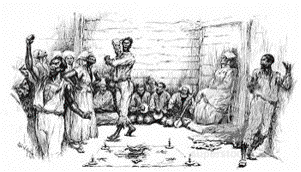
Hetepu (Peace & Blessings). I would like to welcome you to the Land of Kam and share with you how I discovered this path. Since I have written about my shamanic journey in all of my books I will keep this introduction brief, but I want to share it with you so that you can analyze and recognize the patterns that have occurred in your life, and find your path. So let’s begin.
I started reading and studying about the Kemetic religion when I was a teenager because the church’s refusal to stand up against various injustices during the mid-1980scrack cocaine epidemic, led to me losing my faith in God. So, for years I read, studied, and eventually try to mimic the Kemetic religion so that I could become closer to God, but nothing worked. Then, I decided to join several study groups, which led me to meet an individual who claimed to be trained in a Kemetic priesthood. After years of hardship due to following this individual’s ill advice out of my complete naiveté. I met an Afrikan American woman who was a Palo priestess that I called Ms. B, who informed me that I had been bewitched by this individual, which was the reason I was functioning out of character. So, Ms. B gave me a strong herbal bath and told me to call upon Lucero to clear my path.
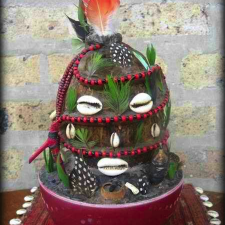
A year later, I continued to try and practice the Kemetic religion with no progress, and then I met Papa who was a little black man from Cuba. Papa was a son of Ellegua a Babalawo (high priest) in the Lukumi/Santeria religion, an adherent in Espiritisimo Cruzado (Afro-Cuban Crossed Spiritism), and a member of the all-male Abakua Society. Although Papa could not divulge secrets to me, he shared a lot of stories with me regarding his life in Cuba and how it was living in the States, which I wrote all down in my journal (libro). I really enjoyed hearing him talk to me about the orishas (Lukumi/Santeria or Yoruba angels) and, some of the cultural customs Cuban had in regard to the spirits.
But, when Papa learned that I was trying to mimic the Kemetic religion, he scolded me big time and told me. That it was foolish to mimic the religion of a culture who existed thousands of years ago because the Kemetic religion was not based upon contemporary times. In other words, the Kemetic religion of old was based upon an agrarian society where the Kemetic people who were ruled by caring and spiritual-minded rulers. That was not my reality. My reality was that I was a descendant of Afrikan slaves who were forced to work in North America.
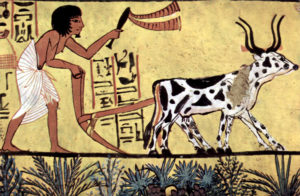
Basically what Papa was telling me was that the Kemetic religion was too spiritual, but I didn’t get it because I was too zealous about the Kemetic religion at the time. So Papa told me that it was best that I focus on the concepts and principles by learning about my spiritual heritage Then, shortly after he vanished and I lost contact with him.
Frustrated that I was not making any progress with the Kemetic religion, except running into roadblock after roadblock. I decided to give up and focus on my career. That’s when I met Iya, an Oshun priestess, a gifted seer and diviner who informed me that the reason I was having so many problems was that I was called to be a shaman. But, the counsel fell on deaf ears because as I had mentioned I was tired of trying to be spiritual and literally going nowhere.
Then, suddenly I fell deathly ill and was bedridden. Unable to stand for long periods of time or walk, resulted in me losing my job. Thankfully I had already paid the rent for that month, but I wasn’t sure how I was going to eat or keep a roof over my head. Then one day one of my younger brothers told me, “This is where you have to work your faith.”
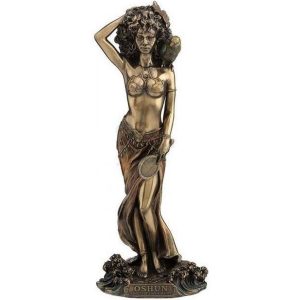
But, I didn’t have any faith. I was all over the place with a hodgepodge of beliefs. Everything I had done was based upon watching someone else do it. I didn’t know if it worked because it was not based upon my culture. Then, I remembered that I wrote everything that Papa told me down in my journal. So, I read it and remembered that he advised me to research my spiritual heritage and it was a good thing that I did.
What I learned was that the first Afrikans brought to North America were from the Kongo-Angolan region and that they were either Christian or familiar with Christianity.
I also learned that contrary to popular belief, Afrikan Americans did not lose their culture and that according to Robert Farris Thompson author of The four moments of the Sun: Kongo Art in Two Worlds and Flash of the Spirit: Afrikan & Afro-American Art & Philosophy, one of the cultural tools that helped our ancestors retain our culture was because of the Kongo cosmogram called the yowa, dikenga dia Kongo, tendwa kia nza-n’ Kongo in KiKongo, which is commonly known as the Kongo Cross.
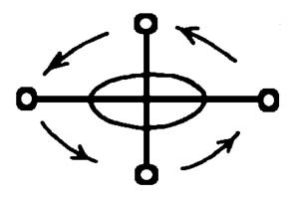
The Kongo Cross is the spiritual foundation of the Old Kongo Kingdom that was conceived hundreds of years before European contact. It symbolizes the Land of the Living above and the Land of Dead, which are governed by the four movements of the Sun that symbolize the cycle of life: Sunrise (Kala/Birth), Midday (TuKula/Life), Sunset (Luvemba/Death), and Midnight (Musoni/Rebirth).
To my surprise, I learned that throughout the Afro-Diaspora, people of Afrikan descent practiced similar cultural practices as we did but the difference between them and us was that through slavery, religious oppression, and racism. Afrikan Americans lost the theology behind our culture.
Afrikan Americans did not lose their culture. They lost the theology behind our culture.
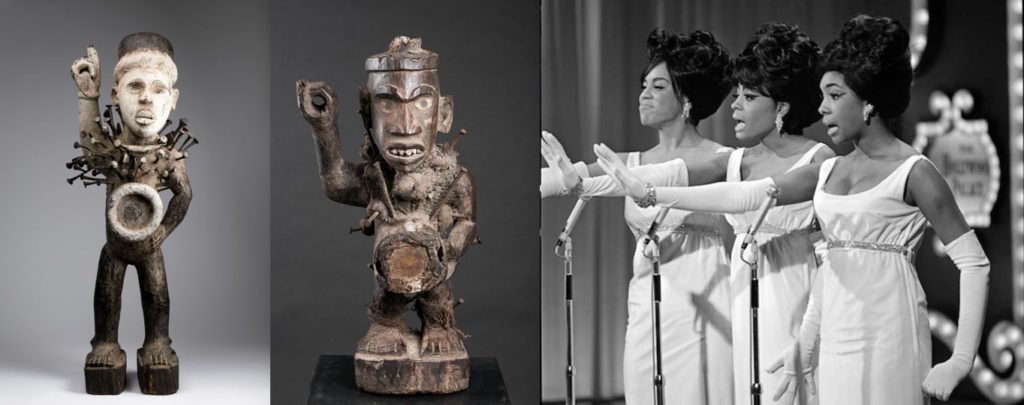
Proof that we have been and are still practicing our culture can be seen when you compare the pose of the Kongo power statues, which was used for protection and warding evil. Alongside with the poses of the Motown supergroup, The Supremes’ song Stop In the Name of Love.
Notice if you will, the hand gestures and the hand resting on the hip. An adaptation of this same pose was popularized by Martin Lawrence’s “Talk to the Hand” slang.
There are other examples that Dr. Thompson gives, which points to a Kongo-Angolan origin such as, the term “funky” which refers to body odor is probably derived from the KiKongo word lu-fuki. The term lu-fuki which also refers to odor was used by the BaKongo to praise individuals for “working out” their craft. As James Brown would say, “Ain’t it funky!” In fact, the late Kongo scholar Dr. Fu-Kiau Bunseki explains that when someone wants to be blessed by an elder they may sit with them to feel their lu-fuki, because the smell of a hardworking elder translated to mean luck.
Not to mention some of the most common Kongo words that are used in everyday Afrikan American vernacular like goober (peanut), and gumbo (okra),
Now, I always have a lot of people ask me “What do you mean we lost the theology behind our culture?” Well, we have all seen videos of rappers pouring liquor to their deceased family and friends, right? Well, we know that this ritual is called libations but why are they doing that? Is it benefiting their deceased family/friend, the individual pouring libation, or both? These are theological questions.
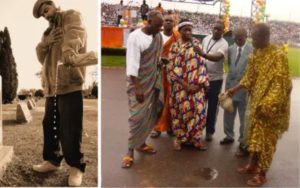
Another example, most of us are familiar or at least know of people who attend the church and shout (dance) and/or speak-in-tongues. Again, why is this done? What is the nonbiblical benefit and purpose behind this cultural practice? In other parts of the Afro-Diaspora when an individual goes into a trance-like they do in the church. The possessed individual gives people insightful and spiritual advice to improve peoples’ lives.
If this sounds bizarre it is because religious fanatics and the Hollywood horror film industry have done an excellent job in making us afraid of our spiritual heritage with movies like The Exorcists, Child’s Play, The Believers, The Serpent and a Rainbow, etc.
Consequently, we practice our culture but do not have any understanding behind our cultural practices, so we suffer because we are unable to benefit from the spiritual wisdom of our ancestors. But, our ancestors suffer as well because they are not able to help us if we fear them.
So I wanted to learn about the Kongo Way but I only knew of two ways that I could do it. The first option was to take a trip to the Kongo-Angolan region so that I could learn firsthand about Kongo spirituality, as many had done by traveling to Nigeria to learn the Yoruba faith. But, I quickly learned that since the Kongo people were the first to encounter the Europeans and to be enslaved. The entire Kongo-Angolan region was the most devastated by the Transatlantic Slave Trade and imperialism. Thus making this option virtually impossible to learn the traditional spiritual religion because the Old Ways of the Kongo was rarely practiced.
The second option was to somehow see if I could hook up and learn from the late Kongo scholar Dr. Kimbwandende Kia Bunseki Fu-Kiau (April 9, 1934 – November 29, 2013), but this option wasn’t possible because I did not know Dr. Kia Bunseki Fu-Kiau, so I wasn’t even sure if he was interested in training people, and. The last I heard, he had fallen ill, so I seriously doubt if he would consider teaching anyone.
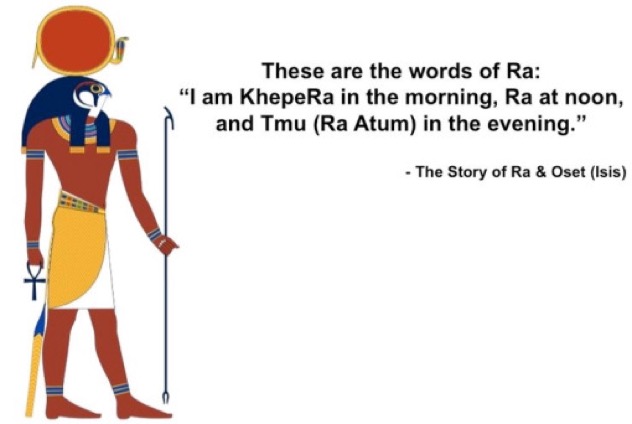
Fortunately, my ancestors presented me with an alternative and revealed to me. That after years of reading and studying the Kemetic religion, my ancestors showed me that the Kongo Cross was similar to the Amun Ra spiritual tradition. In one of the Kemetic legends called the Story of Ra and Oset (Isis), Ra reveals that he is ” Khepera in the morning, Ra at noon and Tmu (Ra Atum) in the evening.” I understood Khepera to be Sunrise (Kala/Birth), Ra to be Midday (TuKula/Life), Tmu who was also called Ra Atum (or Atum Ra) was the Sunset (Luvemba/Death), and. Although the Story of Ra and Oset (Isis) does not directly mention it, I understood it was a riddle, which indicated that Amun Ra referred to the moment at Midnight (Musoni/Rebirth).
By making one-to-one comparisons the Maa Aankh cosmogram was discovered. Almost immediately afterward, my life instantly changed as a surge of ancestral wisdom seemed to fill my head.
I remember the very first thing I did was erect an ancestral altar based upon this new understanding, and money became available for me to purchase food and pay my bills.
I could not explain.
I wanted to understand why it worked because in North America. We are raised to question and try to understand everything from a logical and scientific because if it does not make sense, it does not exist. And, every time I tried to understand it, I would literally muck it up. Until finally, I had to surrender and accept that in order to progress in life I needed to partner with ancestors as Hru (Horus) had done with Osar (Osiris) in the Story of Osar (Osirian Myth), which led to the discovery of Kamta.
